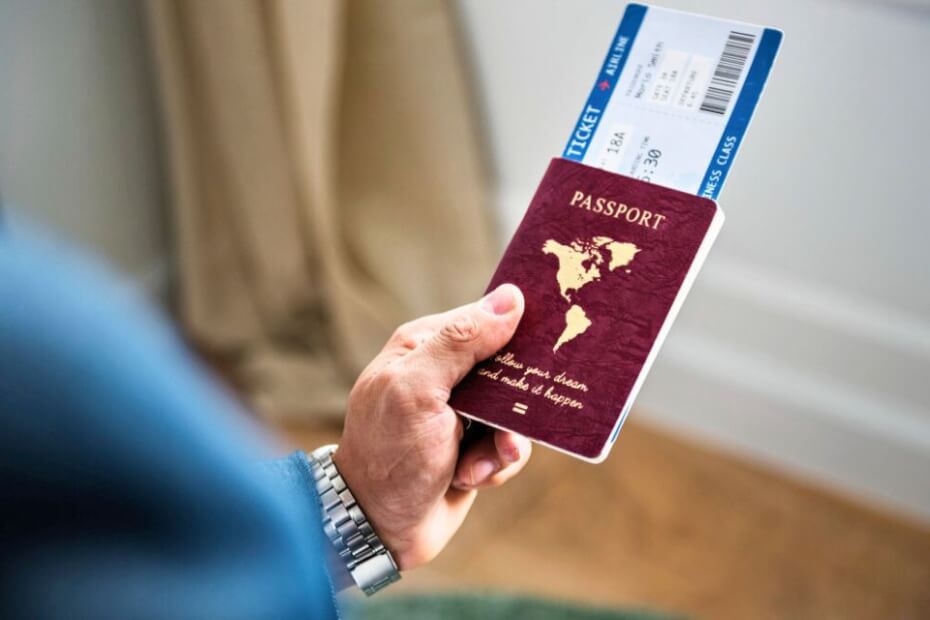
All travelers bound for the United Kingdom (UK) must have a visa or an Electronic Travel Authorization (ETA). Which one travelers should obtain depends on their passport, length of stay, or purpose of visiting the UK.
The ETA is not a visa. However, the new digital permit for the UK is viewed as a travel requirement similar to a visa, so it can be confusing. This could especially be puzzling for those who visit the UK without any other travel document except a passport.
Here, we break down the similarities and differences between a visa and an ETA to help travelers better understand the new system.
The UK visa system and the introduction of the ETA scheme
When the UK was part of the European Union (EU), its freedom of movement policy allowed UK, EU, Iceland, Norway, Liechtenstein, and Switzerland citizens to travel within the Schengen Area with just their national identification cards.
Post-Brexit, securing the border was one of the pressing concerns of the UK Government. Most countries require visas for immigration control. Visas help monitor and regulate visitors’ entry and exit, preventing illegal entry and criminal activity.
The UK’s visa and immigration system effectively monitors the movement of visa-required visitors. However, there was no way to keep track of those who could enter the UK without a visa.
Many countries enjoy visa-waiver status with the UK, which means their citizens do not need to apply for a visa to visit. The UK ETA system tracks and pre-screens such travelers and identifies threats before they arrive.
It is similar to other travel authorization schemes used by the United States (US), Canada, and Australia. By mid-2025, the EU will have its own European Travel Information and Authorization System (ETIAS).
A quick comparison between a UK ETA and a visa
The UK offers many types of visas depending on a traveler’s length of stay or purpose of visit. Some visas allow for work, stays of more than six months, or multiple entries.
Below is a side-by-side comparison of the different aspects of the UK ETA and the UK visa.
| ETA | VISA | |
| Eligibility | Non-visa nationals | Visa-required nationals |
| Length of stay | Short trips of less than six months | Short trips and extended stays |
| Purpose of visit | Tourism, family visits, permitted business activities, short-course study, and transit | Tourism, family visits, business, long-term study, transit, and work |
| Cost | £10 | starts at £115 |
| Application process | Entirely online | Must visit a consulate or visa center to submit requirements |
| Processing time | More or less three days | At least three weeks |
| Requirements | Valid passport | A valid passport, a recent passport photo, proof of financial capacity, UK accommodation and travel itinerary, evidence of ties to the home country, etc. |
| Validity | Multiple trips over two years or until the passport it is linked to expires, whichever comes sooner | Single or multiple entries, depending on the type of visa applied for. |
ETA vs. Standard Visitor Visa

An ETA grants a person permission to travel to the UK, while a visa grants an individual permission to enter, work, or stay in the country.
Travelers with a UK visa or immigration status in the UK do not require an ETA or additional permission to travel. The new system does not affect the government’s visa policies and procedures.
Eligibility criteria
The ETA only applies to travelers who do not need a visa to enter the UK or citizens of countries with visa waiver agreements with the UK. It is required for short stays in the UK, from day trips to up to six months.
The UK Standard Visitor visa is required for nationals or citizens of countries without visa-waiver agreements with the UK. Other UK visas are intended for those who plan to work or stay in the UK for more than six months.
Those who are denied an ETA must apply for a UK Standard Visitor visa instead.
Application process
The ETA application is entirely online. Travelers must provide personal, passport, and contact information. They must also answer security questions about their criminal or immigration past and ties with illegal groups, if any.
To apply for a UK Standard Visitor visa, travelers need to create an account on the UK Visa and Immigration (UKVI) system and complete an application form providing personal details, travel plans, and the purpose of the visit.
Applicants must then schedule an appointment at a consulate or visa office to submit biometric data and supporting papers. These include their valid passport, UK accommodation, and travel itinerary.
Travelers must also submit proof of financial capacity, such as bank account statements. They must show that they can fund their trip to the UK, including their accommodations, everyday expenses, and return home.
They must also submit documentary evidence of their ties to their home country, such as proof of property ownership. This proves that they will return home.
Processing time
Travelers receive the decision on their ETA application within three days. Some applications are processed within minutes, but there are instances when processing takes more than three days.
A UK Standard Visitor visa application typically takes at least three weeks or more to process and arrive at a decision. They must also collect their passport from the visa office or consulate.
Approval and validity

The ETA is an electronic document linked to a traveler’s passport. If granted, it is valid for two years or when the passport it is linked to expires, whichever is sooner.
With a valid ETA, travelers can travel to the UK multiple times as long as their stay does not exceed six months at a time. When the ETA or passport expires, they must re-apply for a new ETA to continue being allowed to travel to the UK.
Travelers who change passport details must also apply for a new ETA. This applies to those whose passports were lost or stolen or those who changed their name.
On the other hand, if granted a UK Standard Visitor visa, travelers will receive a visa vignette or a sticker on their passport. Their passport will be stamped when they arrive at the UK border to activate it or mark their entry date.
A Standard Visitor visa allows travelers to enter and remain in the UK for six months. It is a single-entry visa, meaning travelers must re-apply for a visa to revisit the UK.
Travel purpose and restrictions
The ETA and the UK Standard Visitor visa are almost the same in this aspect.
Both are valid for a temporary stay in the UK for up to six months. They can be used for tourism, visiting family and friends, short-course study, permitted business activities, and transit.
The ETA and Standard Visitor visa are also valid for other purposes, such as medical treatments. This is provided that the holder meets the additional conditions for their travel purpose and does not exceed a stay of six months.
For non-visa nationals transiting in the UK, the ETA is required regardless of whether or not they go through border control.
On the other hand, visa-required nationals can apply for a Standard Visitor visa if they are transiting in the UK for more than 48 hours before continuing their journey to their destination.
Transit travelers in the UK for less than 48 hours can apply for a Direct Airside Transit visa or a Visitor in Transit Visa. The former is for those not going through border control, while the latter is for those going through border control but leaving the UK within 48 hours.
Fees
A UK ETA application costs £10 each. Travelers must pay the fee online to submit the application form. The system only accepts electronic payment methods such as credit or debit cards, Apple Pay, and Google Pay.
On the other hand, a UK Standard Visitor visa costs £115 each. A Direct Airside Transit visa costs £35, and a Visitor in Transit visa costs £64.
Long-stay visas, or those that permit the traveler to enter and remain in the UK for more than six months, cost more.
Visa applicants can pay more to fast-track their application. ETA applicants do not have this option.
Should you get an ETA or a Standard Visitor visa?

Again, the answer depends on a traveler’s passport, length of stay, and purpose of visiting the UK.
The ETA applies only to non-visa nationals or citizens of countries who do not need a visa to enter the UK. Citizens of countries who do not have visa-waiver agreements with the UK must apply for a Standard Visitor Visa.
Both the ETA and the Standard Visitor visa are valid for stays of up to six months for tourism, visiting family and friends, short-course studies, permitted business activities, and transit.
Those who plan to work or stay in the UK for more than six months must apply for the appropriate UK visa regardless of the country that issued their passport. Those denied an ETA must instead apply for a visa.
ETA vs. ETIAS
Another source of confusion comes from mixing the UK ETA with the EU’s ETIAS. Both are digital traveler permits intended for non-visa nationals.
The ETA is for non-visa travelers visiting the UK. It applies to citizens of EU Member States, Iceland, Norway, Lichtenstein, Switzerland, and other European countries.
The ETIAS is for non-visa travelers visiting the EU and Schengen Area. British citizens will need an approved ETIAS to travel to and within Europe.

